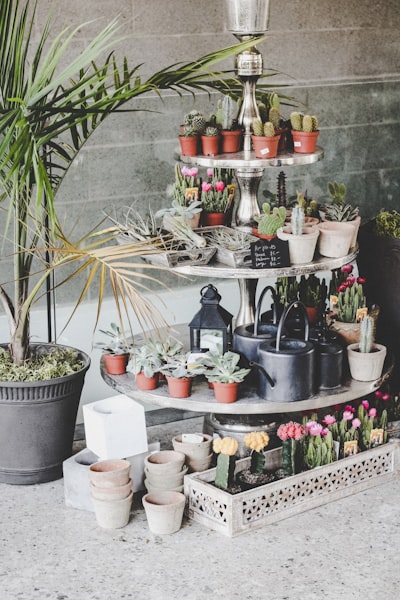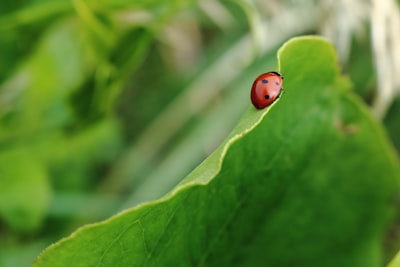Succulents are great plants for anyone who wants an easy-care plant that can add a touch of nature to their home. If you want to learn how to take care of succulents, this blog is for you. This post will cover the basics of succulent plant care for beginners, including tips on light and water intake, rotations, watering habits, soil preparation, container choice and drainage, pest control, and fertilizing. We’ll also provide a guide to growing succulents in various environments (indoors or outdoors), as well as some final tips to keep your succulent plants healthy and blooming all season long!
1. Make Sure Your Succulents Get Enough Light
Succulents are one of the most popular houseplants today, and for a good reason. They’re easy to care for, look great, and add much-needed greenery to any room. One of the most important things you need to know about succulents is that they need a lot of light to grow – ensure they get plenty of sunlight. If your succulents are in daylight, move them to a shady area during the day. Succulents like indirect or filtered light can be placed on a window ledge or near a bright light like a sunbeam. Keep your succulent soil moist but not wet – too much rainfall will cause root problems and disease growth.

2. Rotate Succulents Frequently
Succulents are one of the most popular houseplants; for a good reason, they’re beautiful and easy to care for. They need to be rotated frequently for them to grow and thrive, and here are some tips on how to do it:
1. turn the plant upside down, or use a succulent garden stand.
2. Rotate succulents frequently to get them growing in all directions.
3. Make sure the soil is evenly moistened every time you rotate the plants, and don’t overwater them during this process.
4. When repotting succulents, use fresh soil about twice as deep as the original container size.

3. Water According to the Season
Succulents are one of the most popular house plants because they are easy to care for and look great as part of any décor. Knowing how to water your plants according to the season is essential for a succulent owner. A succulent needs water when the soil is dry, and the leaves are cracked or wilted. Make sure to water your succulents in the morning and evening hours in hot climates and water them less in colder climates. If you live in a dry environment, water your succulents every day. Don’t overwater, as overwatering can damage the roots of your plants. During the winter dormancy stage, stop watering your succulents entirely for 2–3 weeks.

4. Water the Soil Directly
Succulents are among the most popular houseplants because of their unique and drought-tolerant characteristics. They need well-watered soil to thrive, so ensure to water them directly. Do not give succulents too much water at once – this can cause root rot and damage to the plant. Succulents are also prone to overwatering, so check the soil texture and colour every couple of weeks – if they start to look dry, water them accordingly!

5. Keep Succulents Clean
Succulents are an excellent addition to any home but require little care. Following these five plant-care tips will make succulents happy and healthy. Succulent plants need well-drained soil that is still moist, so water them regularly – usually twice a week during the Summer and once a week during the winter. If succulent plants get rot, gently remove dirt or debris with your hands or a dustpan and brush. Never use harsh chemicals on succulents – this could damage their delicate leaves or kill them altogether—finally, clean succulent plants every so often – usually once a month.

6. Choose a Container with a Drainage
Succulents are high-maintenance plants, but that doesn’t mean they don’t need primary care. Succulent plants need well-drained soil to thrive, so ensure the container you choose has a hole in the bottom for drainage. Water succulents like moisture but don’t like rot or fungal overgrowth. Fertilize monthly with a diluted solution of fish emulsion or compost and water, and then again when growth slows down. Keep an eye on watering schedules – too much water can cause succulent plants to become brittle and dry out.
7. Plant Succulents in the Right Soil
Succulents are plants that need porous soil to survive. So, if you want to add succulent plants to your garden, select a suitable ground as they store water. The ideal soil for succulents is light and moisture-retaining but contains some organic matter. Succulent plants should be planted in containers or pots at least 2 feet wide by 2 feet deep by 1 foot high. Ensure the soil remains moist but not soggy – watering succulents twice a week is usually enough. Remember to keep an eye on the succulents and water them when necessary. Enjoy succulent plants in your garden!
8. Get Rid of Bugs
Succulents are beautiful plants that add a touch of beauty to any room, but they are also susceptible to bugs. This means it’s essential to get rid of them before they can cause any damage. There are a few ways to do this – using a vacuum cleaner, insecticide, or boiling water. Make sure the soil is free from excess pesticides, and water the succulents regularly to keep the humidity high.

9. Fertilize Succulents in the Summer
Succulents are one of the most popular indoor plants because of their easy care and stunning appearance. They are also known to thrive in a wide range of climates, making them an excellent choice for anyone looking for an easy plant to care for. However, succulents need special care in the summertime – this is when they are growing the most rapidly. Make sure to fertilize succulents in the Summer when the plants are growing most quickly, and use it specifically designed for succulents. Keep an eye on the succulent during this time – if it starts to look unhealthy, change the fertilizer accordingly!
Conclusion
After reading through these plant-care tips, you can take care of your succulents in the best way possible. Make sure to give your succulents the light they need, rotate them often, water them when appropriate, and clean them up afterwards. In addition, make sure the soil you choose is suitable for succulents, fertilize them in the Summer and remove bugs from around them. Hooray for succulents!
Frequently Asked Questions
How do you take care of succulents?
When it comes to taking care of succulents, there are a few things you need to keep in mind. Here are the basics:
1. Provide them with plenty of water – Succulents need water to survive, so make sure to give them enough to hydrate and stay healthy.
2. Avoid keeping in sunlight directly and frosty temperatures – While succulents may tolerate some direct sunlight, too high temperatures can cause them to burn or discolour. Likewise, succulents do not do well in cold temperatures, so keep them inside when the temperature drops below freezing aeration.
3. Fertilize succulents every two weeks – Succulents may grow slowly at first, but over time they will need fertilizer to help them grow taller and flourish. Fertilize succulents every time you water them, and use a balanced fertilizer that contains both nutrients and water.
What is the lifespan of a succulent?
The lifespan of a succulent depends on the type and size of the leaf and how it is cared for. Most succulents can live for up to 10 years if properly cared for. Make sure to water them regularly and give them plenty of sunlight and water. Don’t forget to let plants sit in water that’s too salty or acidic, as this will damage them.
